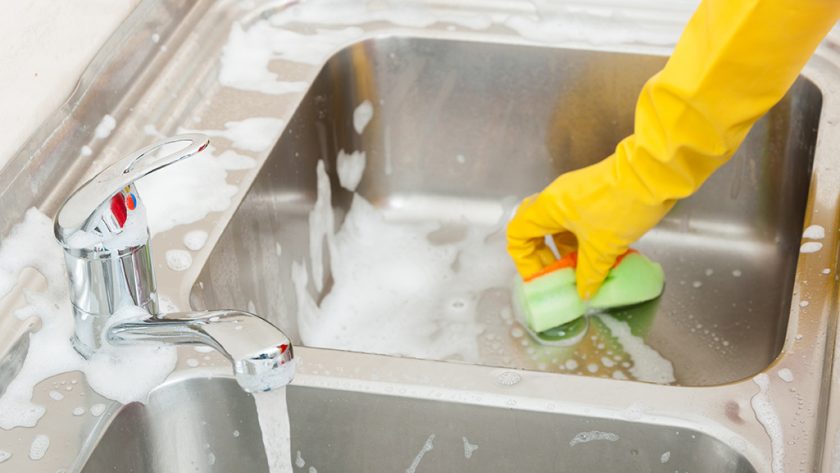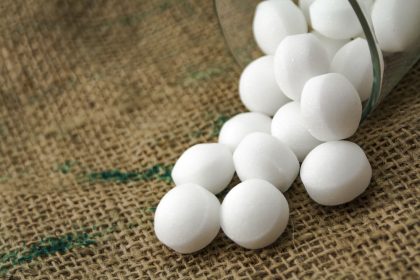Have you ever been irritated by those small, flying insects that hover around your kitchen or indoor plants? They’re most likely gnats. These tiny creatures are usually harmless, but their persistent presence can be a nuisance in your home.
Luckily, this article by natural pest control specialists will equip you with the necessary knowledge to tackle them effectively. You will learn about what gnats are, the types that commonly infest homes, and how to naturally manage these pests using DIY eco-friendly remedies. And, if all else fails, the option of hiring pest control experts is always available.
What are gnats?
Gnats, part of the Diptera order, which includes flies and mosquitoes, are small flying insects usually not exceeding a few millimetres in size. They thrive in warm, damp environments and are commonly found around overwatered plants, ripening or fermenting fruits, and in drains. While they do not cause significant physical harm to humans, gnats can carry diseases and are generally annoying with their relentless swarming habits. Their breeding rate is another matter of concern as a small infestation can quickly grow if not addressed promptly.
Types of Gnats
Understanding the gnat species that have infiltrated your home is fundamental to your natural pest control efforts, as the type will influence your eradication strategy. Some common gnat species that infest homes are:
- Fungus Gnats – As the name suggests, they have an affinity for damp, fungus-rich environments, often seen around overwatered indoor plants. They are small, black insects, and one might spot them lingering near the soil of houseplants. Adult fungus gnats are harmless to humans and pets, but their larvae can damage young plants and root systems by feeding on the fungi and organic matter within the soil.
- Fruit Flies – Though technically a variety of gnat, fruit flies have their unique characteristics. They exhibit a fondness for ripened fruits and vegetables, fermented foods, and food waste residing in rubbish bins. Their colour varies, though most are of a light brown or tan hue. Fruit flies are more than just a nuisance; they can also spread bacteria and other disease-causing organisms, contaminating food with each landing.
- Drain Flies – Also known as moth flies or sewer gnats due to their preferred breeding ground, Drain Flies are distinctive, tiny, fuzzy insects that resemble small moths. They lay their eggs in the organic film lining drains, septic tanks, and standing water. While they pose no direct health risk to humans, their persistent presence can lead to significant frustration and hygiene concerns.
Each species has its unique quirks and pest control challenges. However, understanding their biology and habits is the first step towards developing an effective eradication strategy.
How to get rid of gnats
Addressing a gnat infestation using natural pest control methods is an appealing choice, considering their environmental friendliness and minimal health risk. Here are some methods on how to get rid of gnats, provided straight from professional pest exterminators.
Make a DIY Gnat Trap
A DIY Gnat Trap is an inexpensive and straightforward strategy. Here’s how it works: fill a jar halfway with apple cider vinegar and cover it with plastic wrap. Secure the wrap with a rubber band and then poke small holes in the wrap. The gnats, attracted by the vinegar’s aroma, fly into the jar but cannot escape due to the small entry points and the slippery nature of the wrap. This method is particularly effective against fruit flies and can considerably reduce the population in a few days.
Use Bleach
One method to consider for handling drain flies effectively is the use of bleach. This common household cleaning agent, when poured into the infested drain, can effectively eliminate gnats and their larvae that are hiding within the depths of the drain’s sludge.
However, it is critical to note that bleach is a powerful chemical agent. If misused, it can cause damage, especially to certain types of pipes such as PVC. Therefore, prior to using bleach, it’s important to verify that your home’s plumbing system can tolerate it. Furthermore, safety measures, including wearing suitable protective equipment like gloves and safety glasses, should be observed when handling bleach to prevent potential harm.
Bleach’s corrosive nature can be significantly reduced by diluting it with an equal volume of water. Moreover, to prevent inhalation of the potent fumes it can emit, make sure the room in which you’re working is well ventilated.
Importantly, bleach should never be mixed with vinegar. The combination results in a chemical reaction that produces chlorine gas, a substance that can be harmful, even in small quantities. Chlorine gas exposure can lead to health concerns such as coughing, difficulty breathing, and watery, stinging eyes. If vinegar has been used in previous pest control efforts, ensure it has been thoroughly cleaned and eliminated before introducing bleach.
Use a vinegar and dish soap spray
Another effective natural gnat control technique is to utilise a vinegar and dish soap mix. To prepare this solution, mix equal parts apple cider vinegar and water in a spray bottle, then add a few drops of dish soap. The vinegar works as a lure, attracting the gnats with its fermented scent, while the dish soap reduces the water’s surface tension. When the gnats land on the solution, they sink and drown due to the compromised water surface. This deadly mix is ideal for managing gnats around fruit bowls and houseplants.
Make a candle trap
The Candle Trap method is an old but gold strategy, especially effective in a dark room or during the night. Place a candle (preferably a tall one) in a shallow dish filled with water. The dish should be wider than the candle to collect drowned gnats. Light the candle, and switch the lights off. The gnats, attracted to the light and heat, will fly towards it and ultimately fall into the water and drown. This method is particularly effective against various types of gnats due to their natural attraction to light sources. It might even lure and take care of other unwanted insects too.
Each of these methods can provide relief from a gnat infestation. Still, they are most effective when combined and complemented by preventive measures such as proper food storage, regular cleaning, and managing household moisture levels.
Consider hiring pest control experts
While natural methods are effective in managing small infestations, severe cases might necessitate professional intervention. Pest control experts or pest exterminators are trained in handling diverse pest situations. They can accurately identify the type of gnat you’re dealing with, locate breeding grounds, and apply treatments that are both effective and safe for your household. Hiring pest control services not only guarantees the removal of the current infestation but also ensures preventive measures are in place to deter future infestations.
Conclusion
Utilising natural techniques for gnat eradication provides an environmentally-friendly and non-toxic solution. However, gnat infestations vary greatly and what is effective for one might not be for another. Therefore, it may be necessary to test different strategies, whilst also keeping your home clean and dry. However, if and when natural methods prove insufficient or if the infestation escalates beyond control, do not hesitate to engage pest control services. The experts can offer comprehensive pest management, ensuring your home returns to a gnat-free state.





